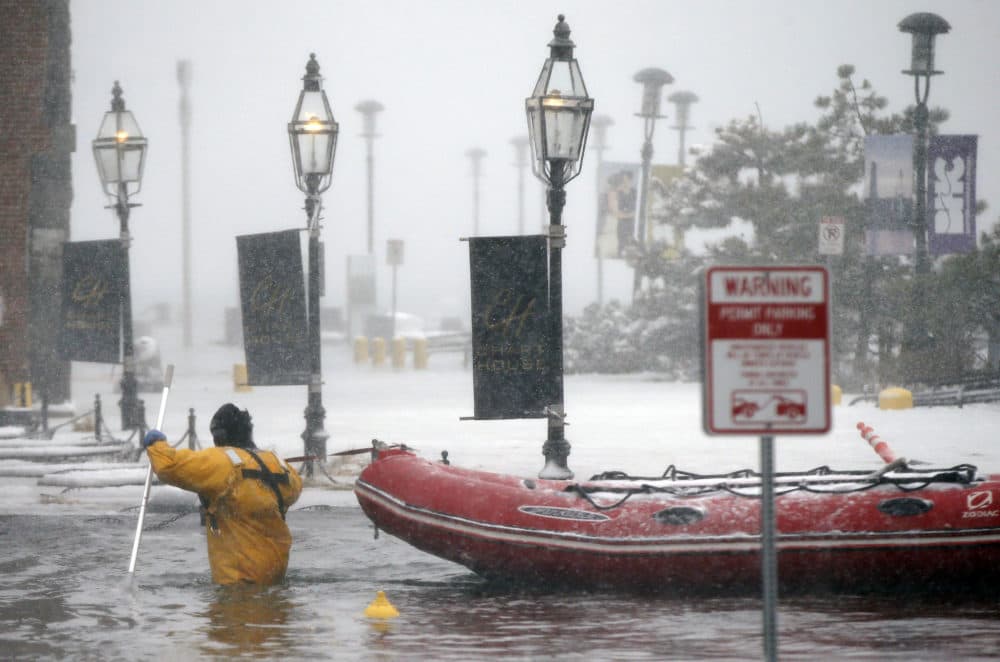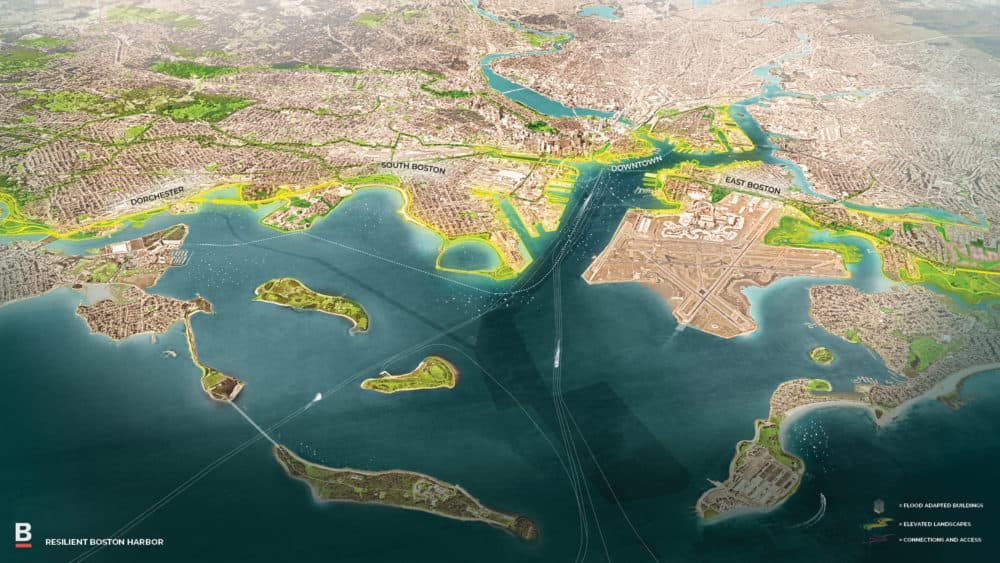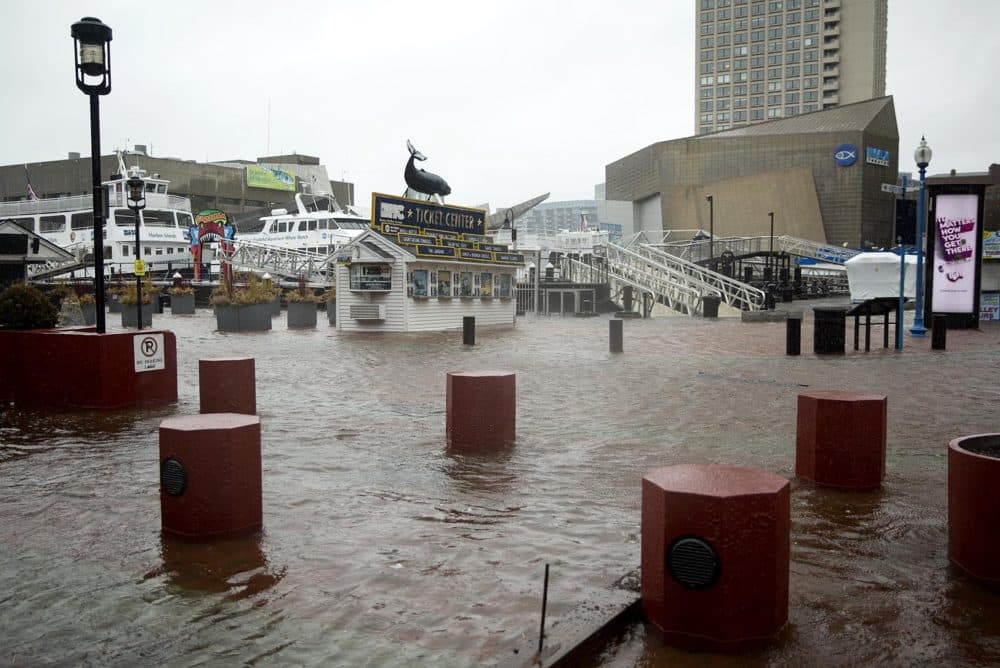Advertisement
Commentary
The Businesses That Benefit From A Clean Harbor Should Help Boston Address Climate Change

Mayor Marty Walsh and the business community are saying all the right things about the threat of climate change to Boston’s future. The mayor deserves kudos for acknowledging that Boston is among the most vulnerable cities in the country, and for providing some visionary leadership to address the challenges the community faces.
Now comes the hard part.
If we are serious about a vision for Boston that allows us not simply to survive rising oceans, but to create an environment and conditions under which our city can thrive, it’s going to take substantial contribution and involvement from the private sector. Because it’s going to be expensive.
And it will require significant sacrifice — including by those who see only opportunity (and no risk) when they look at our rapidly developing waterfront and other flood-prone areas of the city that are in the process of redevelopment.
Mayor Walsh and his allies are right to think big about making our 47 miles of waterfront more resilient; it’s the city’s first line of defense. Particularly visionary is the proposal for a chain of waterfront parks, that not only allows for a better accommodation of rising sea levels, but also creates public recreational spaces that we all can use and enjoy. Once the state transportation and public utilities develop comparable climate-resilient plans for their critical facilities, the big picture will be in place.

But we’ve been here before. When it comes to creating plans that address the coming reality of climate change, our leaders haven’t always followed through.
The fact is, developers and property owners have greatly benefited from projects that are only possible because of a publicly-financed, cleaned-up Boston Harbor. The more than $4 billion of public investments in Deer Island and in Boston’s polluting sewer overflows has helped to generate at least $8 billion (by some estimates) in commercial and residential real estate investment in the Seaport — in the last decade alone.
City leaders need to encourage stronger participation from these developers. And those who have benefited from the Harbor cleanup need to be better partners to the city and do their fair share to help protect all neighborhoods and the economy.
[Boston's] financial commitment should be able to leverage investment from private developers to contribute their fair share.
If the Boston as we know it is to survive, we have no choice but to act. And that means working out the nitty-gritty details that won’t always get positive headlines.
As a city and a state, we need to determine what our priorities are, reach consensus on how to move forward and modernize our codes, regulations and standards. As tasks become ever-more complicated, we must ensure all of our efforts are coordinated. Most importantly, we must decide how we are going to pay for it.
Several key things are already in motion: Boston is in the process of creating a new flood resilient overlay district that will outline a more realistic flood-risk zone based on the city's Climate Ready Boston data, and require buildings within it to withstand increased risks.
The city has also completed climate resilient design guidelines for public works, which provides a framework for evaluating flood barriers and protection in Boston's public rights-of-way like streets and sidewalks. These efforts are just the beginning of what will need to be a more comprehensive approach to guiding the design of Boston's built environment to better prepare for climate change impacts.
Advertisement

With these plans, Boston is signaling a real commitment to and prioritization of climate resilience. The city has also committed 10 percent of its annual budget, or $16 million to $20 million annually, to these efforts — but it’s clear that is not even remotely enough. We must be prepared to use the levers of government to ensure that this is a collective responsibility, and not one faced by Boston taxpayers and property owners alone.
The city’s financial commitment should be able to leverage investment from private developers to contribute their fair share. The city also has some power to prevent future climate change fiscal challenges from becoming even worse by ensuring that all new construction properly calculates and covers the risks of rising tides and fierce storms and doesn't make a daunting challenge even worse.
The vision Mayor Walsh outlined for a resilient Boston Harbor is a promising one. Does the city, including its political leadership and business community, have the will to truly make it a reality? That remains to be seen.

